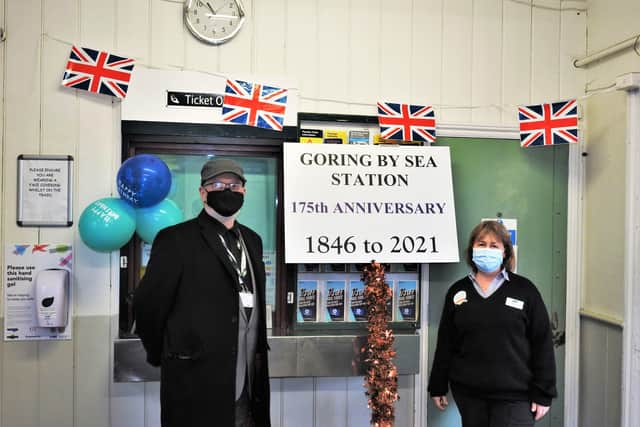Worthing marks 175th anniversary of Goring-by-Sea Railway Station
and live on Freeview channel 276
The station was first opened on March 16, 1846, and pre-Covid around 500,000 passengers were using it every year.
In the past year, Network Rail has made a significant investment in the station, including extended the up platform, improving platform surfaces and installing better fencing and lighting.
Advertisement
Hide AdAdvertisement
Hide AdThere is a new road crossing and the refurbished footbridge is due to be unveiled later this month, having last been restored in 1987.


From next week, work will start on additional projects, such as new information screens, new benches, a platform shelter and ticket machine canopy.
Robert Walker, area manager, said: “With so much investment happening at Goring-by-Sea, it’s fantastic to be celebrating such a significant anniversary.
“These improvements directly benefit Goring and its surrounding areas, providing customers with a better, safer station that’s ready for the next 175 years.”
Advertisement
Hide AdAdvertisement
Hide AdGoring by Sea station considerably pre-dates Durrington-on-Sea, which opened in 1937, and West Worthing station, which dates back to 1887.


Rowena Tyler, community development officer with Southeast Communities Rail Partnership, said: “The Sussex Coast Line has a number of stations which have recently, or are soon-to-be, celebrating 175 years.
“Commemorating the important milestones help to inform the local community, especially at stations which have been adopted by local schools or community groups.”
John Vaughan, railway enthusiast, author and photographer, was keen to ensure the anniversary was marked but said due to current restrictions, it was more of a commemoration than a celebration.
Advertisement
Hide AdAdvertisement
Hide AdHe said: “The line was constructed by the Brighton & Chichester Railway, which was soon absorbed by the London Brighton & South Coast Railway. The single track was soon doubled.


“In 1890, a three road goods yard opened and in 1900 a new up side Saxby & Farmer signalbox was opened and an iron pedestrian overbridge constructed.
“Goring station was renamed Goring-by-Sea in 1908 to avoid confusion with Goring on Thames (Goring & Streatley). In 1938, the line was electrified and 20 years later, an up side station awning was provided.
“Over the years there have been a large number of other station improvements. For many years, the station won the Best Kept Station award, with railway staff caring for platform gardens.
“The goods yard closed in 1962 and manual signalling was abolished in 1988, the area being controlled from Lancing panel. Over 175 years, there have been half a dozen primary train operators.”